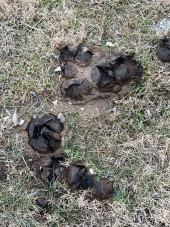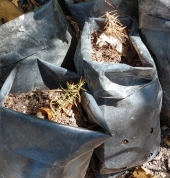Hey All,
It wasn't that long ago that breeders in RI, NH, and NY produced some of the most successful breed-standard chickens, whose descendants are (to this day) among the most numerous on the planet.
Being permies, though, forces the focus toward a little more sustainability than breed-standard selection will typically produce... which is great because folks here are already interested in landrace flocks!
Before posting, I checked the forum and found the following threads, but there weren't too many New Englanders represented, and the threads are old, so here's to starting a new one!
https://permies.com/t/71257/Landrace-chickens
https://permies.com/t/138215/Landrace-Chicken-project-breeding-thoughts
https://permies.com/t/138104/thoughts-developing-landrace-breed
https://permies.com/t/204746/permaculture/Chicken-breeding
I've got a little of a landrace project going on my acreage in North Western RI, and am wondering if anyone wants to get in on the action with their own farms to share roosters and foster genetic diversity... or at least make sure that inbreeding is kept to a minimum.
All my original birds come from Sand Hill Preservation (who have been wonderful to work with if you're looking for specific breeds and hardy stock) and have been free-ranged (by day) with all the hard knocks that come with that.
I've got Icelandics, Golden Spangled Hamburgs, a [heritage] Rose Comb RI Red, Mixed American Game Foul (raising out this year), and some hybrids from last year's survivors.
If anyone is interested in
Cockerels (free to any Permies interested in doing some landrace breeding collaboration), I've got the following (copying from my Craigslist post):
Icelandic (3):
As a medium-sized bird, Icelandics are known for their feed conversion (to eggs) and hardiness in the winter months.
One of these guys would be a perfect genetic specimen to breed into an existing flock to sire out hardier stock.
A super-hybrid adapted to the harsh environment of Iceland, they are the descendants of all the chickens brought by the Viking Settlers (all the chickens that could survive, that is).
Known as a 'landrace,' there is no breed standard, so they naturally express different coloration.
American Game (4):
We got these to breed further hardiness and independence into our flock. They are a genetic collection of various American Game Foul that were allowed to mix together to get back toward a 'wild' chicken. As such, they thrive on free range, will raise out their own young, and make great table birds (which is what will happen to any cockerels remaining).
They also have some of the most beautiful, complex plumage I've seen!
A YouTuber in FL has a playlist on why Games are the best homestead chicken; see:
*Games should not be brought into a flock with another rooster; once they hit sexual maturity, they will fight fierce for dominance. Anecdotally, Game Cocks have been known to kill off predators attacking the flock (like hawks and owls), while maintaining a pleasant temperament toward humans.*
Red-Ice (2):
Cockerels whose father was Icelandic and whose mother was a heritage-breed RI Red (not the modern production red from the farm stores...). All the benefits of the Icelandic Breed, with the ability to pass on genes for a little more laying.
Perfect homestead rooster.
If you're interested in some cockerels, let me know, but more importantly, if you're in the New England region and want to help make an
überhuhn for permaculture homesteads, let's get organized in this thread!













